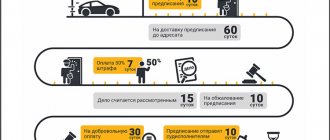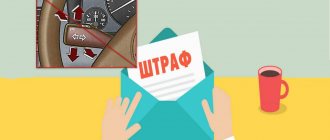To the list of useful itemsAll news
Category: Summer Tire Tests
49022 views49022
Winter has arrived and with the first serious cold, a massive re-shoeing of tires or the purchase of winter tires begins. But such an event cannot be called a whim of car owners. Changing tires is a procedure regulated by law. The nuances of exactly how to carry out such work are described in regulatory documents. The law that regulates all this is called “Technical Regulations of the Customs Union TR CU 018/2011 “On the safety of wheeled vehicles.”
Are there penalties for out-of-season tires?
Back in 2014, bill No. 464241-6 was introduced into the State Duma of the country, which proposed supplementing Article 12.5 of the Code of Administrative Offenses of the Russian Federation with part 3.2:
“Part 3.2 as follows: “3.2 Driving a vehicle in violation of the requirements for the operation of tires and wheels - entails the imposition of an administrative fine in the amount of two thousand rubles.”
For two years, consideration of this bill was postponed, but on October 20, 2021, it was sent for consideration to the State Duma and was to be considered in three readings. But in fact, the bill on a fine for using summer tires in winter did not even pass the first reading , and on November 1, 2021, it was decided to postpone its consideration indefinitely, and as of 2021, consideration of the “tire bill” was no longer started.
There is still a fine for tires
However, you can still get a fine for wearing the wrong tires. Technical regulations require that all wheels be re-shoeed, and the remaining tread depth must be at least 4 mm. It is for violation of these rules that sanctions are provided. According to Part 2 of Art. 12.5 of the Code of Administrative Offenses of the Russian Federation, a driver driving a car with excessively worn tires may be given a warning or a fine of 500 rubles. Those who installed studded and non-studded tires on the same axle or use wheels of different models and sizes will also be punished.
Tire cuts, punctures and tread separation can also result in a warning or fine. As well as for poorly tightened bolts, a crack or a seam on the disk.
Payment does not exempt the driver from being fined again if he does not “change” his car.
Don't drag your feet
Photo: RIA Novosti/Alexey Filippov
Rubber is dragging down the ruble: tires may become more expensive due to markings
Sensors built into the tires will report the movement of the car.
So what is the fine for summer tires in winter today?
The issue of changing winter and summer tires in Russia today is NOT regulated by anything, and drivers do not need to fear fines for using summer tires in winter, or sanctions for another version of tires that are not suitable for the season - simply because there are no such fines! Car owners, at their own discretion, decide to replace summer tires with winter ones, based on weather conditions and air temperature. If we talk about specific dates, then in central Russia the unspoken guidelines are November 15 for changing tires from summer to winter, and March 15 for switching from winter tires to summer.
Of course, these dates are rather arbitrary, and they differ in certain regions of the Russian Federation. Drivers, relying on common sense, when changing tires, focus not on dates, but on weather conditions. That is, if it’s already spring on the calendar, and there’s still snow on the roads and the forecast promises icy conditions, then no one will “change their shoes” to summer tires . And if in the warm Crimea or Sochi in November, and sometimes even in December, the weather is sunny, warm, and the road surface is dry and clean, then drivers are unlikely to switch to winter tires urgently.
What are all-season tires?
All-season tires are considered a compromise between summer and winter tires. In hot weather, all-purpose tires soften faster than summer tires, and in cold weather they harden faster than winter tires. It follows from this that the temperature properties of such tire models are equally suitable for use in both winter and summer.
The tread pattern of all-season tires is selected taking into account summer and winter operation so that the tire provides the best grip on the road in all conditions. Like winter tires, they have deep grooves to keep them from getting clogged with snow. Like summer ones, they are equipped with V-shaped openings for water drainage.
What penalties were offered for summer tires in winter?
As we said above, rumors that in the near future it will be prohibited at the legislative level to “shoe” a vehicle out of season have been circulating for a long time, and several bills were submitted to the State Duma for consideration, but for various reasons, none passed even the first reading. The essence of these tire bills was as follows:
- To be fined for driving a vehicle using tires that are not in accordance with the season (the driver must use winter tires in the cold months, or “change the car’s shoes” taking into account the average daily temperature.
- To be fined for driving a vehicle on winter tires with studs in the summer.
- Refusal of insurance payment in the event that during an accident the culprit’s vehicle was wearing tires that were not appropriate for the season.
But, as we see, so far all these legislative initiatives have not gone further than bills, and you still decide for yourself when to change tires from summer to winter and vice versa! There is no fine for summer tires in winter in the Russian Federation!
Tread height
Traffic regulations prohibit the use of bald tires and set the remaining tread depth for tire use in winter and summer. During the period from June to August, the tread of summer tires should be at least 1.6 mm deep. On winter tires with appropriate markings, the tread depth should not be less than 4 mm. It doesn’t matter what time of year you drive it.
Is there a penalty for wearing winter tires in summer?
If you study the Technical Regulations of the Customs Union TR CU 018/2011 “On the safety of wheeled vehicles,” you will find out that it brought new rules for Russian motorists. In this technical regulation, in paragraph 5.5 of Appendix No. 8, there are the following provisions on the use of certain car tires at different times of the year:
- You can drive on summer tires from June to August (they must be studless).
- From December to February, drivers can take part in road traffic while driving a car shod with winter tires (studded or not).
- In the CU regulations 018/2011 you will not find the concept of “all-season tires”.
- Compliance with tire wear limits is mandatory.
At the level of regional authorities, it is allowed to change the months of the established ban on the use of tires by season - these nuances must be recorded in regional regulations.
| Summer tires | Winter studded tires | Winter studless tires | |
| Winter (December - February) | + | + | |
| Spring (March - May) | + | + | + |
| Summer (June - August) | + | + | |
| Autumn (September - November) | + | + | + |
If we talk about whether there is a fine for winter tires in the summer, then this issue has remained unresolved for a long time. At the first stage of discussions, there were proposals to establish a fine of 5,000 rubles for such violations - but such an initiative did not find approval among deputies. There were other proposals regarding the size of the fine for driving in the summer on winter tires.
In fact, in 2021, the fine for driving in the summer on winter tires applies only indirectly under Part 1 of Article 12.5 of the Code of Administrative Offenses of the Russian Federation, that is, if you drove in the summer on winter tires with a heavily worn tread (“bald” tires), the depth of which is less than 4 mm, then
the fine for “bald tires” will be 500 rubles (or a warning).
When to change your shoes for the summer?
Tires need to be changed to summer ones in Russia in June 2021.
This is what current legislation says, and only if you have studded tires. And even this is relative - we will find out why below. And this issue is not regulated by traffic rules, as many believe. The rules for the use of tires on wheels are regulated by Section 5 of the Basic Provisions (Appendix to the Traffic Regulations), and not a word is said here about the seasonality of the use of rubber.
The prescription of the seasons when it is necessary to install winter tires, and when to install summer tires, is contained in the Technical Regulations - this is today a variation of GOST on the technical equipment of modern cars. But there is not a word in it about the date when you need to switch to summer tires according to the law. It only talks about prohibitions on using winter tires in certain seasons and only with studs:
5.5. It is prohibited to operate vehicles equipped with tires with anti-skid studs in the summer (June, July, August).
Thus, the legal acts of 2021 do not establish a rule at all when to install summer tires after winter. Only one of them stipulates that you cannot drive in the “winter” during the 3 summer months – from June to August inclusive.
But there is an important subtlety!
It consists in the fact that the same Technical Regulations contain a note indicating that in each city it is possible to change such a ban, but only upward:
The terms of the operation ban may be changed upward by regional government bodies of the member states of the Customs Union.
Regional bodies are regions, subjects of Russia. You can find out whether such changes have been made specifically in your region from the official websites of road services or the traffic police of your city. But, as a rule, their appearance is widely covered in the local press.
One thing we can say for sure is that in March, April and May of this year there are none in the largest cities.
- In Moscow, there is a general rule for the Russian Federation - you can legally switch to summer tires in June 2021.
- In St. Petersburg, the ban period was also not changed, and here it operates according to the general rules of the Technical Regulations.
- Even in the warm Crimea and Sochi (as well as throughout the Krasnodar Territory) the period has not been increased.
You will also be interested in:
- Is there a fine for driving on summer tires in winter and winter tires in summer today? What date will it start?
- Is it possible to drive on winter tires in summer and what is the fine?
- In winter on summer tires: what are the requirements and the penalty?
What are the penalties for driving on bald tires in 2021?
The expression “bald tires” has long been used among drivers, meaning driving on tires where the tread has worn out almost completely. According to the new rules, driving on tires with worn tread may result in a fine of 500 rubles (or a warning) . If we turn to the traffic rules and its provisions on the admission of a vehicle to operation, the driver is prohibited from taking part in road traffic if the remaining tread height of the tires of his vehicle:
- freight transport - less than 1 mm;
- passenger car - less than 1.6 mm;
- moped or motorcycle - less than 0.8 mm;
- bus - less than 2 mm.
According to Art. 12.5 of the Code of Administrative Offenses, traffic police officers can issue a fine to the driver for this violation - 500 rubles.
According to rumors, deputies plan in the future at the legislative level to increase the amount of the fine for driving on bald tires by 4 times. Such a jump can be considered quite justified, since a huge number of accidents occur due to the fault of drivers driving on the road on bald tires, especially in the winter months, when the roads are icy.
An important change in traffic rules is being prepared
To be more precise, these are amendments not to the Rules, but to a separate regulatory act, which is an annex to the traffic rules - List of faults for which the operation of vehicles is prohibited.
Actually, such a list works in 2021, but the list of all faults is outdated - the document is already about several decades old, and, for example, it does not contain such conditions as the inoperability of ABS, ESP and other systems.
The essence of the new amendments is that a large list of such faults may be included in the annex to the traffic rules, including a ban on the use of summer tires in winter. We previously wrote about this change in legislation.
Please note the official wording for the new law:
Vehicles of categories M1 and N1 are not equipped with winter tires during the winter period (December, January, February). Note. By decision of the executive authorities of the constituent entities of the Russian Federation, the deadlines defining the summer and winter periods may be changed upward.
And in this case there will already be punishment, because the Administrative Code regarding violations of the List of Faults has very real penalties.
Thus, for general violations of this legal act, punishment is established under Part 1 of Article 12.5 with a fine of 500 rubles or a warning.
However, as of May 20, 2021, these changes have not come into force, and therefore there is no fine for driving on summer tires in winter. This information is relevant today. We monitor updates daily, know whether the amendments have come into force and update the article in a timely manner.
There are only 2 subtleties in this matter:
- the fine will be legal when new changes are made to the traffic rules,
- if your tires do not meet other conditions of the List of Faults (we will talk about them below).
Let's compare how the legislative regulation of the issue of fines for tires that do not comply with the winter season works before and after the amendments.
Comparison table between the old winter tire requirement and the new penalty
| Like now? | What will happen after the changes? |
| The obligation to change shoes and the ban on summer tires in winter are contained only in the Technical Regulations. | The requirement to wear winter tires will be specified in the List of Faults – an appendix to the traffic regulations. |
| The summer tire ban applies in December, January and February. | Everything will remain the same - it will be prohibited to drive on summer tires during the 3 winter months. |
| There is no fine for summer tires in winter, because there is no punishment for violating the regulations. | There is a current fine for violations of the List of Faults, and since the ban on summer tires will be written directly into this legal act, liability will also apply to this violation. |
That is, in fact, no new traffic police fine will be introduced. It’s just that the list of prohibitions will also include a ban on driving a car on tires that do not correspond to the season. And for violating this list there is already a penalty - 500 rubles, as we indicated above.
From what date will the fine be?
It is currently unknown for sure when the innovations will come into force. To do this, the document must at least be signed, but for now everything is at the stage of finalization and discussion.
But even if changes are introduced, this will not mean that in any case there will be an unconditional fine. The fact is that, as you can see from the official interpretation of the List above, the use of summer tires is prohibited only in the winter months: December, January and February. But in October, November, March and April - even if there is snow during these months and, for example, it is -30o below zero outside, you can technically drive on summer tires. There is only one exception - if a separate restriction is introduced at the regional level, as the wording of the new law allows. However, this was also allowed by the Technical Regulations, but in practice, no region introduced special restrictions until 2021.
Therefore, if you read somewhere that a fine is possible for driving on summer tires in November, March or April, for example, then this is not true and a fake that does not correspond to the truth.
Must there be spikes?
No. As can be seen from the official interpretation of the List, the requirement applies to any winter tires. It is not at all necessary that it be studded - just winter. Velcro is also allowed.
If the car is a truck?
Everything here is also very simple. As now, and if the amendments are adopted and come into force, the requirement to change shoes for the winter applies only to 2 categories of cars (this is also indicated in the interpretation):
- M1 – this includes passenger cars with no more than 8 seats,
- N2 are cars and light trucks, but with a weight of up to 3.5 tons.
Thus, the ban on using summer tires in winter does not apply to trucks.
Will there be a penalty for all-season?
Yes. Again, all-season tires are neither winter nor summer tires. This is exactly “all-season”, which is indicated by a separate marking. Therefore, after the introduction of the changes, a fine of 500 rubles for all-season tires in winter will be legal for passenger cars.
Speaking of labeling...
Will there be a ban on studded tires?
We talked about the requirements for vehicle tires in different seasons of the year, and now we will consider the question of what changes regarding the use of studded tires are planned at the legislative level.
For countries that are members of the Customs Union, the technical regulation TR CU 018/2011, which we discussed above, establishes the following conditions:
- Studded tires are prohibited from being used in the summer – from June to August;
- Rubber with studded tread must be on all wheels of the vehicle (that is, you cannot have both studded tires and non-studded winter Velcro tires at the same time;
- The maximum number of studs per linear meter of tread is 60 pieces. This requirement will apply to tires that were manufactured after January 1, 2021.
If we talk about potential fines for using tires with spikes today, they are not established at the legislative level! Therefore, drivers from countries that are members of the Customs Union should not yet fear penalties. But the fine for driving a car on studded tires and not having a “Spikes” sign is 500 rubles.
You can go
Information appeared in the media that on December 1, certain regulations came into force prohibiting drivers from driving on summer tires in winter. Those who have not changed their shoes allegedly face a fine of 500 rubles. However, this news is nothing more than a fake that scares motorists from year to year.
However, this rumor has some basis. The fact is that the technical regulations of the Customs Union on the safety of wheeled vehicles have long established a ban on the operation in winter (December, January, February) of cars that are not equipped with winter tires. There is also a ban on operating vehicles equipped with studded tires in the summer (June, July, August).
But for this norm to be applied in Russia, it had to be enshrined in a Russian legal document. For example, in the traffic rules or in the basic provisions for permission to operate or in the list of faults for which the operation of the car is prohibited. All these documents are approved by government decree.
A draft amendment to the list of faults was developed and even submitted for public discussion back in September. However, the document is currently being finalized, and it is unknown when it will be published.
Legal aspects of car operation are discussed by RG experts in the “Legal Consultation” section.
Let us remind you that it not only provides for a ban on the use of summer tires in winter and studded tires in summer, but also specifies that such tires must be on all axles of the car. That is, thrifty citizens will not be able to, for example, install studded tires only on the drive axle in winter.
When these amendments are approved by the government, then traffic police officers will have grounds to hold motorists who have not changed their shoes accountable under Part 1 of Article 12.5 of the Code of Administrative Offences. However, the sanction of this article is not the most severe - a warning or a fine of 500 rubles.
When amendments to the list of faults are approved by the government, then traffic police officers will be able to fine drivers who have not changed their shoes.
Let us remember that at the beginning of the year, deputies came up with the initiative to include in the Code of Administrative Offenses a fine for using tires out of season. And such proposals are heard regularly - either when snow falls and traffic jams begin due to trucks stuck on the uphill climb, or in the summer, when road workers attribute the ruts on the roads to the use of studded tires.
Any sane motorist understands perfectly well that changing tires is primarily about his own safety on the roads. On a snowy road, the braking distance on winter tires when braking from 50 km/h will be about 30 meters. On summer tires - about 60. And this despite the fact that in summer the braking distance on the same summer tires on dry asphalt did not exceed 25 meters. And this huge difference can save someone's life.
Moreover, the problem lies not in the tread pattern, but in the composition of the rubber. Winter is softer, more elastic, and does not stiffen in the cold. Therefore, manufacturers recommend installing winter tires not when snow falls, but when the average daily temperature drops below +5 degrees. Even on dry asphalt, softer winter tires will be more effective than summer tires.
It would seem that the requirement to change tires according to the season is absolutely logical. Why has it not yet been enshrined in our legislation? The answer is simple. It is too difficult to satisfy everyone with this requirement.
One of the main opponents of the innovation were the owners of trucks and buses. Winter tires are too expensive for this equipment. And there are slightly more wheels that need to be changed on them than on passenger cars.
However, owners of such equipment have been using retreaded tires for a long time. And the amendments to the list of faults spell out the requirements for such tires for the first time. For example, it is prohibited to install retreaded tires that are older than 7 years. Or install retreaded tires on the front axle.
Another argument against it is that our country is large. And the duration of summer and winter varies in different regions. And the character of this winter is very different. In the south there may not be any snow at all, so why install winter tires there at all?
Therefore, the draft government resolution establishes the ability for regions to determine for themselves when they have a ban on the use of certain tires.
The project establishes the ability for regions to determine for themselves when they have a ban on the use of certain tires
In the meantime, the current list only includes a ban on operating a car on bald tires. The remaining tread depth of winter tires must be at least 4 mm. Yes, it is written down which tires are considered winter. These are tires marked with a sign in the form of a mountain peak with three peaks and snowflakes inside it, as well as the signs “M+S”, “M&S”, “M S”.
By the way, future amendments to the list of faults and conditions under which operation is prohibited are not limited to tires alone. A new requirement for tinting is also being established, in accordance with the provisions of the technical regulations of the Customs Union. The visibility requirements clearly state that the operation of vehicles in which the light transmission of the windshield and windows providing forward visibility for the driver is less than 70 percent is prohibited. This is exactly the requirement established in the technical regulations.
Now the list of faults includes GOST, which provides for the transparency of the windshield to be 75 percent, and the front side glass to be 70 percent transparent. In essence, the Russian document is being brought into line with the international one.
It is better to change tires before snow falls. It is both safer and more comfortable. Photo: RIA Novosti
Driving on all-season tires (Velcro) in 2021
It is worth mentioning separately about all-season tires; you can drive a car quite comfortably on them both in winter and summer. Actually, these non-studded all-season tires are designed for road use throughout the year.
Please note that such tires can only be used in winter if they have the markings “M+S”, “M&S” or “MS” (which means “Mud & Snow”, that is, in English “mud and snow” ) and although the use of all-season tires in the winter months is not otherwise permitted, there is still no penalty for this.
Seasonal question
But what about those who drive on all-season tires? Customs regulations state that they are only permitted for winter use if they are marked as such: “M+S”, “M&S” or “MS”. However, preference must be given to them with caution.
“We recently tested all-season winter tires. These tires work for the time being. And again, if you live somewhere in Murmansk, set up an all-season vehicle and drive through a harsh winter, you end up with a cow on ice. Not like in the summer, but... On all-season tires, one day the braking distance will not be enough,” said Kadakov.
Meanwhile, experts talk about the need for a more differentiated approach to seasonal tires.
Don't drag your feet
Photo: IZVESTIA/Zurab Javakhadze
“This discussion has been going on for many years. And it revolves around the fact that Russia consists of different regions with different climates. And they want to introduce a fine for summer tires throughout the country in winter. Plus, it is not clear what to do for truck drivers whose route exceeds 2 thousand km - go for tire fitting on the way from Novosibirsk to Sochi? Do you know how much truck tire fitting costs?” — Pyotr Shkumatov, coordinator of the “Blue Buckets” movement, asked a reasonable question. In his opinion, now the idea is clear, but the implementation is vague.
“If we introduce fines now, they will catch whoever is easier to catch. There will be no effect in terms of safety,” Shkumatov noted.
We walked through the tire field: is it time for motorists to change tires?
When is the best time to go to a tire shop and is it possible to remove the “Spikes” sticker?
How can traffic police officers fine you for tires?
Above, we have already outlined the situation regarding the legislative framework on the issues of seasonal replacement of tires and fines for using tires out of season. A natural question arises: how will traffic police officers directly on the road monitor whether drivers comply with the standards specified above?
Today, there is only one possible way to establish the seasonality of tires - this is to undergo a technical inspection. But even here there were problems. For example, new cars that have just left the showroom may not pass inspection. And with cars in use, not everything is clear either - the responsibilities of their owners include undergoing maintenance only once a year, which means that the tires’ compliance with the season will be checked only once a year.
To summarize, I would like to note that despite the fact that fines for out-of-season tires have NOT been introduced in 2021 , every car owner must take a responsible approach to the issue of the readiness of his vehicle for current road conditions! It is in your best interests to prepare your car as much as possible for certain weather and climatic conditions!
Previous entry Compensation for damage under compulsory motor liability insurance in case of an accident: timing and amount of payments from the insurance company in 2021
Next entry Amounts of state duty for traffic police services 2021 - 30% discount on payment of fees for government services











